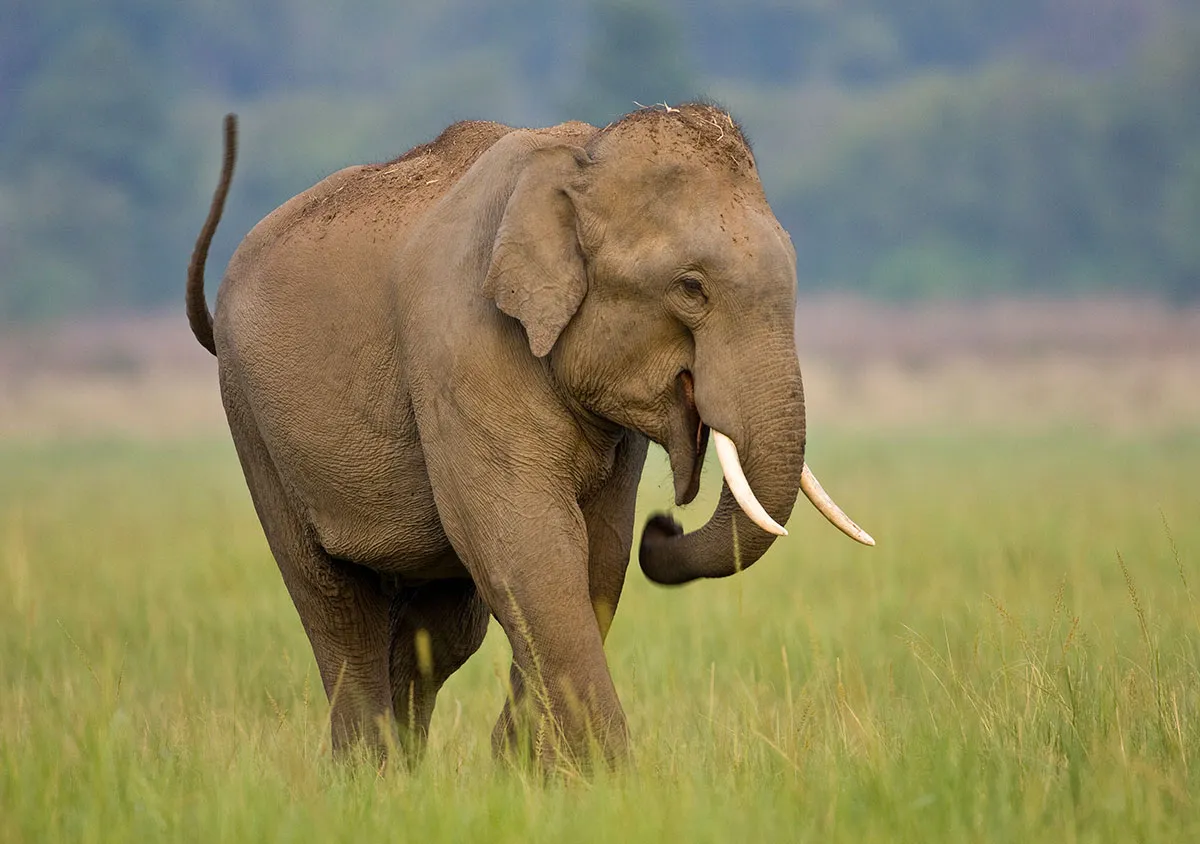The return of the dead to life has long fascinated storytellers, featuring in myths like Orpheus and Eurydice, festivals like the Mexican Dia del Muerte, in Mary Shelley’s Frankenstein and, of course, Jurassic Park. The idea continues to cast its spell. As we describe in our book Strange Natures, ‘de-extinction’, or the ‘resurrection’ of extinct species is the idea about the use of novel genetic technologies that most excites commentators about conservation.
The best-established approach to de-extinction is by cloning. In 2003, Spanish scientists cloned the Pyrenean ibex, a subspecies of the Iberian ibex that went extinct in 2000. The animal lived a scant seven minutes, but it was hailed as the first species brought back from extinction. De-extinction continues to yield startling headlines and graphics: attempts to bring back mammoths even made the cover of the April 2013 issue of National Geographic.
Unfortunately, perhaps, you can’t clone a mammoth. At least, that is Beth Shapiro’s conclusion in her fascinating book How to Clone a Mammoth (notwithstanding its title). It turns out that the DNA in all mammoth samples will always be too degraded to make cloning possible. And the same goes for velociraptors or tyrannosaurs, condemning Jurassic Park in all is guises to remain only a delightful exercise in science fiction.
But there is another approach to de-extinction. It uses the techniques of gene editing to re-engineer parts of the genome of a closely-related extant species to match that of its extinct relative. Before starting you will need a complete genome sequence of the extinct species and of a relatively closely related living species. Working to create the novel life form requires use of the novel technologies of gene editing (especially CRISPR, for which Jennifer Doudna and Emmanuelle Charpentier received the Nobel Prize for Chemistry in 2020).
The woolly mammoth is now the focus of a serious project, led by the charismatic figure of George Church of Harvard University and the American NGO Revive & Restore. They have sequenced the DNA of mammoths semi-preserved in Arctic permafrost and that of its closest living relative, the Asian elephant.
Gene editing is being used to rewrite genes in Asian elephant cell lines, generating increasingly mammoth-like cells (controlling haemoglobin, hair growth and fat production) with each edit. In theory these synthesised strands of ‘mammoth’ DNA could be inserted into the egg of an Asian elephant and implanted into a host female elephant. If a foetus were brought to term and born alive, it would carry woolly mammoth traits – not exactly a mammoth but more like a mammoth than anything since the last one went extinct some 4,000 years ago.
Read more about de-extinction:
- De-extinction: Can we bring extinct animals back from the dead?
- Could we bring back an extinct species using DNA, Jurassic Park style?
There are about 1.4 million differences between mammoth and Asian elephant genomes so they’re hardly exactly alike. Bridging this gap to make a mammoth-like elephant will keep the project focused for years on scientific complexities of the genetic basis for production of cellular proteins. It is best understood as an eye-catching biological experiment, a driver of scientific discovery and an advertisement for gene editing.
While the science of de-extinction obviously excites those doing it, it is less clear whether de-extinction should be a priority for conservationists. De-extinction certainly has its supporters beyond the coterie of synthetic biologists in their laboratories. Charismatic species already exert a strong fascination for conservationists and the public.
Some conservationists also point out that de-extinct species could drive ecosystem recovery by re-starting lost ecological processes (a kind of extreme ‘rewilding’ vision). From this perspective, it is not the fact that the species is alive that is important, but what it does, and the ecological interactions that result.
On the other hand, however scientifically or culturally intriguing it is, the conservation benefits of de-extinction are far from obvious. First, all the laboratory experimentation might create an organism that resembled an extinct species, but it will be a genetic hybrid with the modern species. It would contain just a part of the genetic diversity of the whole former species. The International Union for Conservation of Nature suggests the term ‘proxies of extinct species’ and not ‘de-extinct species' for such creatures, should they be created.
And where would such a species live? Many (perhaps most) ‘resurrected’ species (not least the mammoth) would struggle to find space to live outside laboratory or zoo conditions, let alone having the chance to establish viable free-ranging populations – such as the Russian tundra as proposed for novo-mammoths. A single de-extinct species would be just as alone as the last original individual, probably living its life out in a zoo enclosure. It might be alive, but it would still be on the cusp of re-extinction.

There are lots of other questions about any organism genetically engineered to resemble an extinct species. Taxonomists would have to decide how it should be classified, and lawyers whether the genetic modification could be patented. There are also obvious and significant ethical issues around the animal welfare implications of animal experimentation in the name of de-extinction.
All applications of synthetic biology to conservation are new and untested. Their use in laboratory experiments aimed at the eventual de-extinction of species is fascinating, complicated, expensive, ethically fraught and speculative. On balance, it is unlikely to make an important strategy for conservation. Indeed, as critics have pointed out, the possibility that extinct species could be ‘brought back from the dead’ could distract from the challenges of addressing the drivers of extinction today.
Despite its glitter and appeal, de-extinction is not the furthest developed, the most significant, or the most potentially controversial application of synthetic biology to conservation. As we discuss in Strange Natures, scientists are discussing a host of ways to engineer the genes of wild species for conservation purposes, from the use of gene drives to control invasive species to gene editing to enhance survival in the face wildlife disease or climate change.
These raise fundamental questions about the distinction between what is natural and what is human-made. The idea of bringing extinct species back from the dead is bizarre and exciting, but the greatest opportunities, and challenges, of the power to edit the genes of wild species lie not in resurrecting the past, but in shaping the future of conservation.
Read more about conservation:
- How your weekly shop could help prevent a mass extinction
- 9 ways you can help to save insects from extinction
Strange Natures:Conservation in the Era of Synthetic Biology by Kent H Redford and William M Adams is out now (£25, Yale Books).
- Buy now from Amazon UK, Waterstones or Bookshop.org
